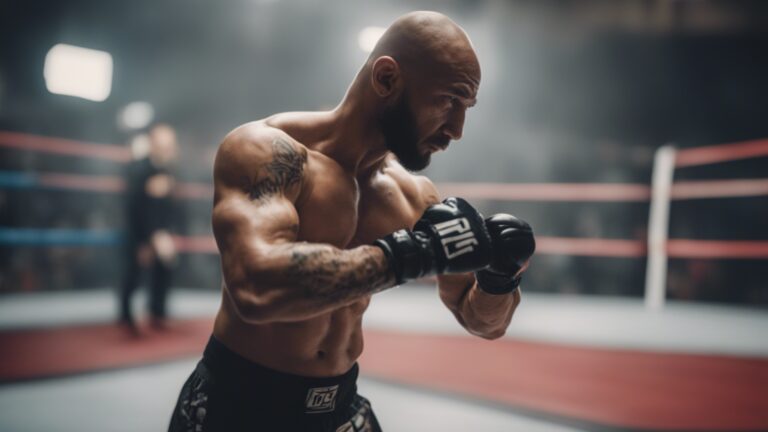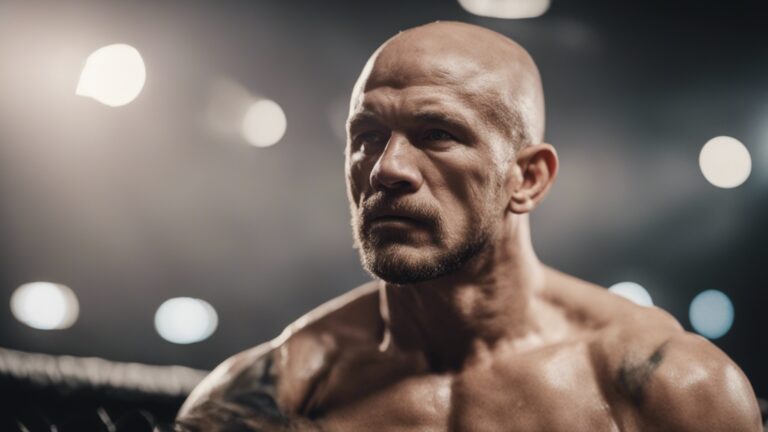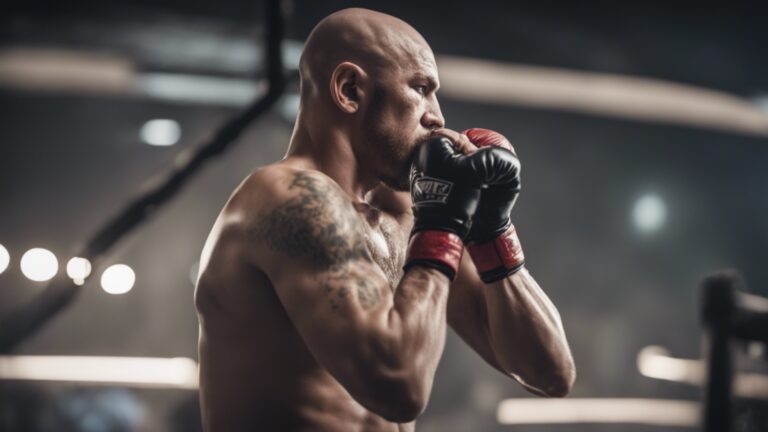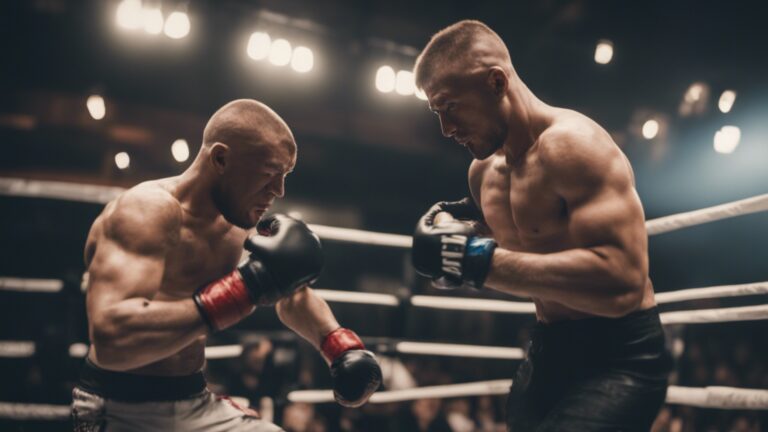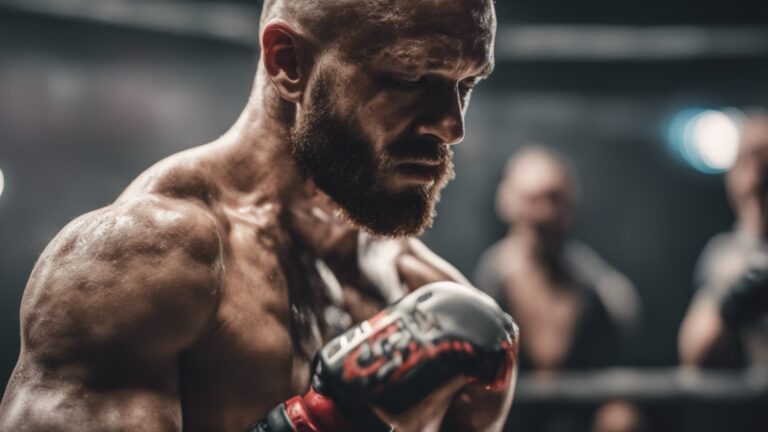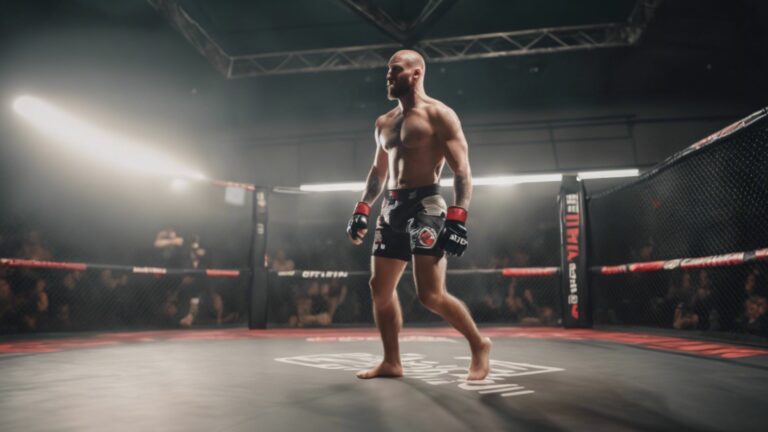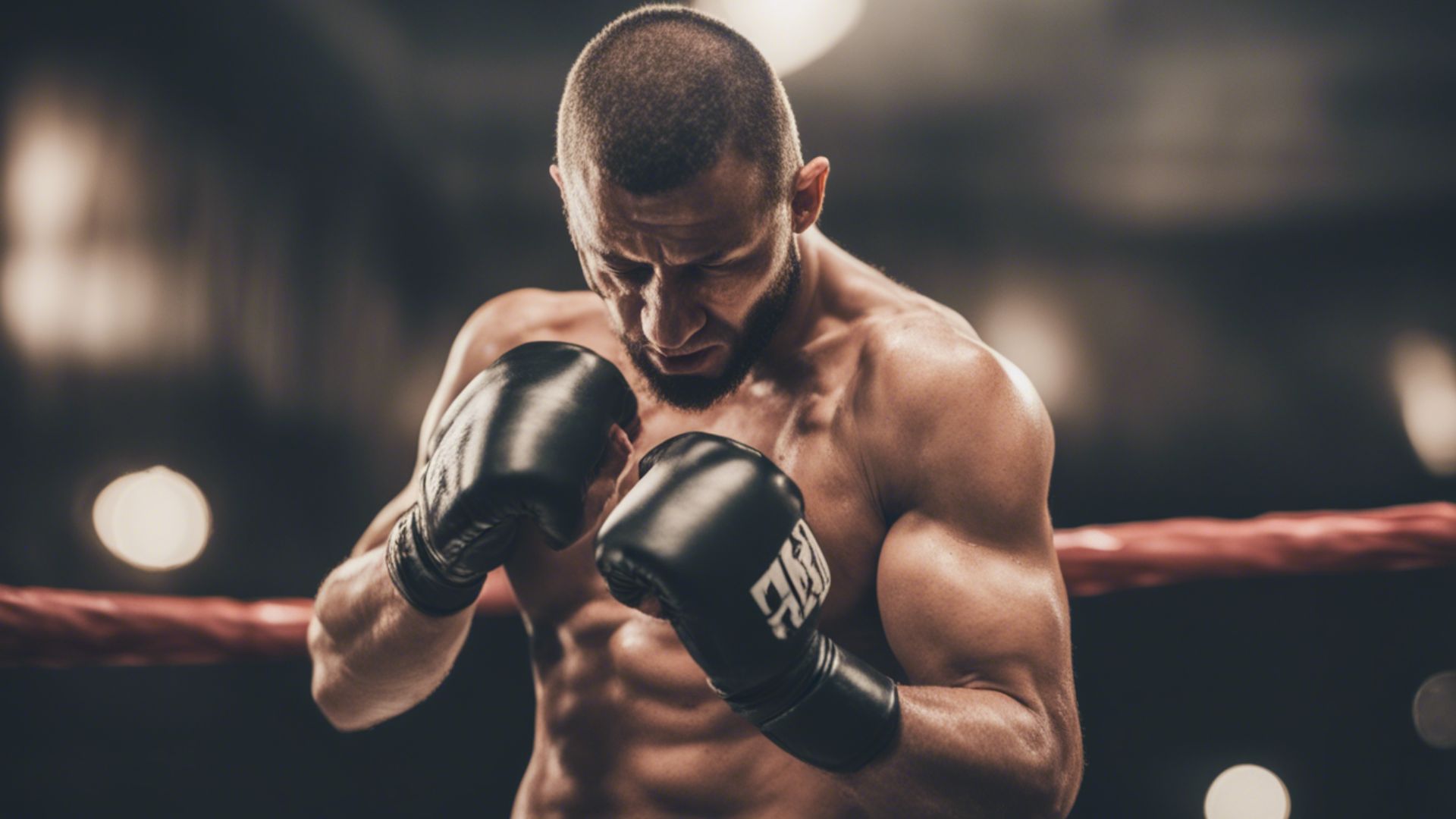
In this article:
MMA fighters manage pain through specialized training and medical care. They often rely on physical conditioning, pain tolerance techniques, and recovery strategies.
Mixed martial arts require physical prowess and an extraordinary capacity to handle pain. Competing in the octagon demands an unparalleled level of toughness, where fighters.
They are conditioned through rigorous training regimens that prepare them for the physical aspect of the fight and enhance their ability to withstand and manage pain.
Core elements include high-intensity workouts, practice in simulated fight conditions, and mental fortitude exercises.
That helps MMA fighters endure the intense training and actual combat discomfort. Regular medical evaluations, alongside targeted therapies such as cryotherapy, physiotherapy, and proper nutrition, aid healing.
Effective pain management is vital for longevity in the demanding mixed martial arts arena.
The Nature of Pain in Mma

Mixed martial arts (MMA) pushes fighters to their limits. They face not just opponents but also intense pain.
Let’s explore how they cope with combat sports’ physical and mental challenges.
Physical Stress in Combat Sports
- Endurance training: Builds stamina to withstand hits.
- Strength conditioning: Prepares muscles for impact.
- Flexibility: Reduces injury risk during fights.
- Proper gear: Gloves and guards offer protection.
- Recovery protocols: Ice baths and massages help heal.
Fighters undergo a rigorous physical regimen to prepare their bodies. They also work with professionals to enhance recovery times, which lowers the chance of long-term injuries.
Mental Resilience on the Mat
- Mindfulness: Keeps focus sharp during bouts.
- Visualization: Fighters imagine winning scenarios.
- Mental toughness: They train to overcome fear.
- Stress management: Breathing techniques calm nerves.
- Psychological support: Coaches provide motivation.
Building mental strength is crucial. MMA athletes use various strategies to stay calm under pressure. They train their minds to push through pain and fatigue.
This helps them stay in control and make quick, strategic decisions during fights.
Training Regimens to Build Tolerance
MMA fighters experience a lot of pain during fights. It’s part of their sport, so they train hard to deal with it.
They have special workouts that strengthen their bodies. They also learn techniques that help them feel less pain. Let’s look at how they do it.
Conditioning the Body
Fighters must get their bodies used to stress. This is important for MMA. They do lots of different exercises.
- Weight training makes muscles strong.
- Cardio workouts boost stamina.
- Sparring simulates a real fight.
A strong body can take more pain. Fighters use special gear, too. They wear gloves and pads to protect themselves during training.
Techniques to Dull Pain Reception
MMA fighters learn mind tricks. These tricks help them block pain. It’s like turning off a switch in the brain.
- Breathing exercises calm the mind.
- Meditation helps them focus.
- Visualization prepares them for fights.
These techniques are not easy. But with practice, MMA fighters get better at them. They learn to feel less pain.
Recovery Strategies Post-fight
MMA fighters face intense combat when entering the ring or cage. After the adrenaline fades, they must address the pain.
Effective recovery strategies post-fight are crucial for their health and future performance.
Immediate Aftermath Care
Once the battle ends, caring for injuries starts right away. Fighters use various methods to deal with pain swiftly.
- Ice packs reduce swelling and ease pain.
- Compression garments help with muscle support.
- Elevation of limbs reduces inflammation.
- Pain relief medication is taken under medical supervision.
- Hydration and nutrition play roles in recovery.
Medical checks are necessary. Many fighters undergo a post-fight medical examination. Doctors check for concussions and fractures.
Long-term Healing Processes
The journey to full recovery extends beyond the immediate aftercare. Long-term strategies ensure fighters return stronger.
- Adequate rest for the body to heal.
- Physical therapy to restore mobility and strength.
- Mindful practices, like meditation, support mental recovery.
- Regular check-ups monitor healing progress.
- Nutritional plans geared towards optimal healing.
Fighters often engage in low-impact exercises during their recovery period. Swimming and cycling can maintain fitness levels without stressing injuries.
Communication with coaches and health professionals guides the healing process. Personalized routines address specific needs.
Pain Management During Matches
Fighters face extreme physical demands during matches. Managing pain is a critical aspect of their performance.
It determines who stands victorious and who does not. Recognized techniques and the body’s chemical responses assist fighters in navigating this arduous aspect of combat sports.
Understanding these methods unveils the resilience within elite athletes and can be inspirational for many.
In-the-moment Coping Mechanisms
Immediate pain responses dictate a fighter’s ability to continue in the ring. These time-pressed techniques focus on mental fortitude and physical adjustments.
- Breathing: Controlled breaths help maintain composure and reduce perceptions of pain.
- Mental Distraction: By focusing on strategy rather than discomfort, a fighter limits the pain’s impact.
- Positional Awareness: Shifting stances can minimize further injury and discomfort.
- Tactical Engagement: Changing tactics can avoid aggravating existing pain points.
Adrenaline’s Role in Combat
The adrenaline rush is a natural phenomenon in high-stress situations. Neurochemicals flood the system, dulling pain and boosting performance.
| Effect of Adrenaline | Benefit to Fighter |
|---|---|
| Pain Suppression | Enables continuation despite injuries. |
| Increased Strength | Provides a temporary boost in power. |
| Heightened Awareness | Sharpens focus for split-second decisions. |
| Energy Surge | Facilitates sustained explosive actions. |
Psychological Aspects of Pain
The Psychological Aspects of Pain play a significant role in how MMA fighters manage and overcome the discomfort and injuries inherent in their sport.
Pain, while physical, also challenges the mind. Fighters often employ mental tactics that are just as vital as their physical techniques in battling against the intense strain their bodies endure.
Mind Over Matter Principles
Embracing the Mind-over-Matter Principles is essential for fighters. The body can achieve what the mind believes.
This principle is not about ignoring pain but understanding and managing it effectively. By acknowledging that pain is a signal, not a limiter, fighters can push their boundaries safely and effectively.
- Positive Self-talk – Constantly reinforcing their ability to overcome challenges.
- Visualization – Imagining successful outcomes to enhance confidence and reduce anxiety.
- Breathing Techniques – Using controlled breathing to stay calm and maintain focus.
- Meditation – Employing mindfulness to remain present and diminish the impact of pain.
The Fighter’s Mindset
Fostering The Fighter’s Mindset is about developing resilience and tolerating pain as part of a larger goal.
Pain becomes a part of the journey, not an obstacle. Mastery over one’s thoughts allows fighters to endure grueling training and intense bouts.
| Element | Description |
|---|---|
| Determination | Unwavering commitment to reach objectives despite pain. |
| Focus | Concentrating on performance, not discomfort. |
| Adaptability | Adjusting strategies to cope with and counter pain. |
| Recovery | Prioritizing healing as part of the training regimen. |
Understanding and mastering these psychological facets equips fighters to approach pain not as a permanent hindrance but as a temporary challenge to overcome in pursuit of greatness.
Medical Intervention and Pain Relief
MMA fighters often face intense pain due to the nature of the sport. Understanding how they manage this pain is crucial.
The strategies include both medical interventions and alternative therapies. These techniques ensure fighters can train effectively and perform at their peak on fight day.
Painkillers and Legality
Pain management in MMA involves careful consideration. Fighters need to balance relief with regulation compliance.
Specific painkillers are permitted but always under strict guidelines.
- NSAIDs – Non-steroidal anti-inflammatory drugs help with inflammation and pain.
- Opioids – typically avoided due to the risk of dependency and side effects.
- Local Anesthetics – Used with caution. It may allow fighters to train sooner post-injury.
Fight organizations have strict drug policies. So, fighters often collaborate with healthcare professionals. This ensures they stick to legal pain management methods.
Alternative Medicine in Mma
In the MMA community, alternative medicine gains momentum for pain relief. These methods steer clear of drug-related side effects and legal issues.
- Acupuncture – Promotes natural healing and enhances recovery time.
- Chiropractic Care – Helps with alignment and chronic pain relief.
- Cryotherapy – Reduces inflammation and speeds up muscle recovery.
- Massage Therapy – Alleviates muscle tension and increases flexibility.
Fighters look to these techniques for a holistic approach. They improve both physical and mental well-being.
Moreover, they decrease long-term pain without jeopardizing their careers.
Frequently Asked Questions
Can Mma Fighters Take Painkillers?
MMA fighters are typically prohibited from taking prescription painkillers before fights due to doping regulations.
They must adhere to strict anti-doping policies enforced by athletic commissions and organizations like USADA or WADA.
Do Fighters Get Used to Pain?
Fighters often develop a higher tolerance to pain through consistent training and exposure to combat situations.
Their bodies and minds adapt to manage discomfort better during fights.
How Can I Increase My Mma Pain Tolerance?
To increase MMA pain tolerance, gradually expose yourself to more intense training. Practice mindfulness and stress management techniques.
Ensure proper rest and recovery after workouts. Regularly engage in strength and conditioning programs. Consult with a coach for personalized advice and strategies.
What is the Most Common Injury in Mma?
The most common injury in MMA is a hand injury, specifically fractured hands or fingers.
What Pain Management Techniques Do Mma Fighters Use?
MMA fighters often use a combination of ice baths, physical therapy, and proper rest to manage pain.
How Do Fighters Cope With Pain During Fights?
MMA athletes rely on adrenaline and mental fortitude during fights to push through pain.
Can Mma Fighters Feel Pain While Competing?
Yes, MMA fighters feel pain while competing, but intense focus and adrenaline can dull the sensation.
What are Common Pain Injuries in Mma?
Common pain-inducing injuries in MMA include fractures, sprains, strains, and concussions.
Do Mma Fighters Use Painkillers Before Fights?
MMA fighters typically avoid painkillers before fights due to doping regulations and performance considerations.
How Does Training Prepare Mma Fighters For Pain?
Training conditions MMA fighters’ bodies for impact and helps build a high pain tolerance through repeated exposure.
Conclusion
MMA fighters showcase remarkable resilience to pain. They rely on strict training, proper rest, and professional medical care.
Embracing a strong mental fortitude, they often overcome what seems unbearable. To amateurs and enthusiasts, their perseverance serves as a testament to the limits of human endurance.
Remember, safety and health remain paramount in these extreme sports.

